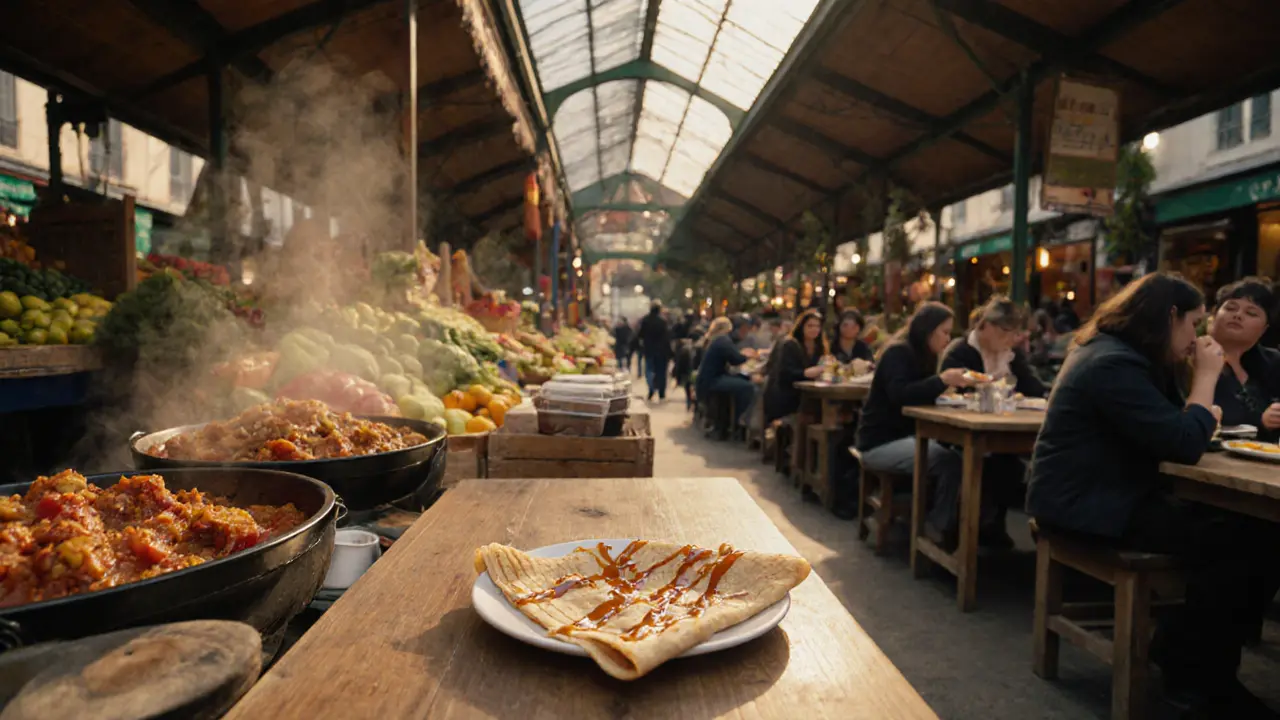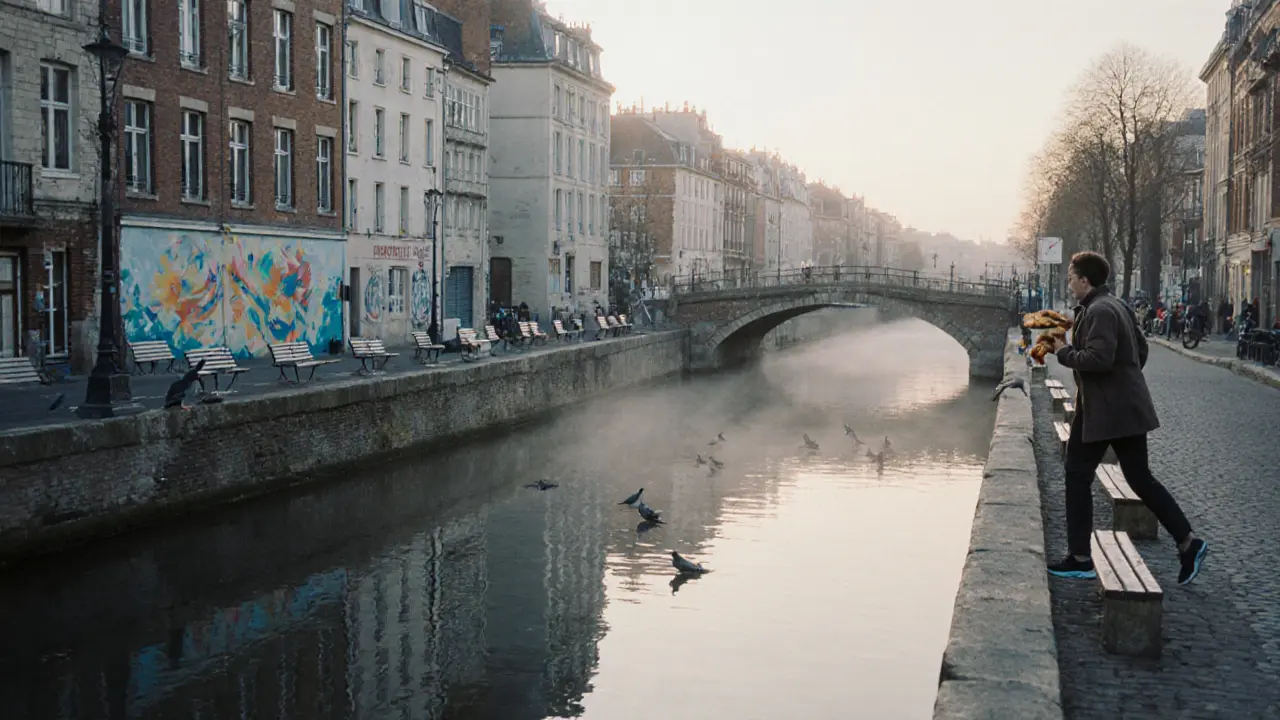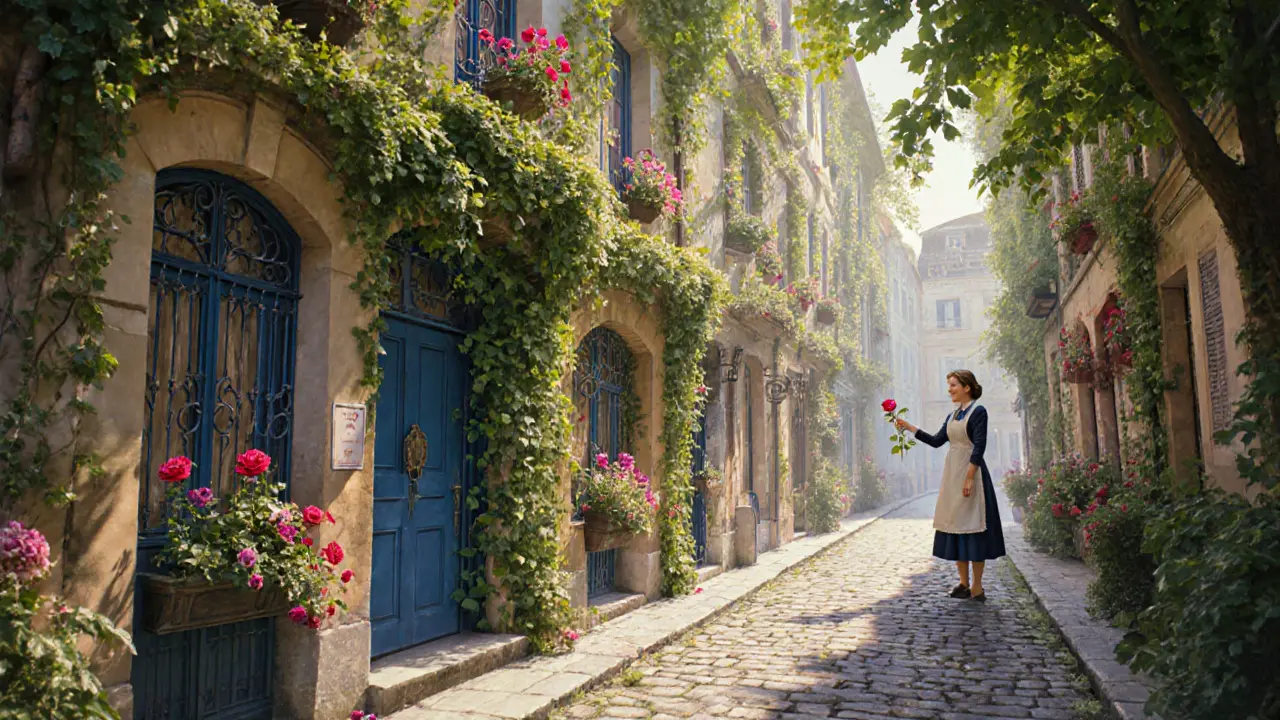The Hidden Gems of Paris: Exploring the City with a Local Guide

Nov, 1 2025
Most tourists in Paris stick to the same five spots: the Eiffel Tower, the Louvre, Montmartre, Notre-Dame, and the Champs-Élysées. But if you’ve been there before-or even if you haven’t-you’re missing the real Paris. The city doesn’t reveal itself to crowds. It whispers in alleyways, in quiet cafés tucked behind bookstores, and in courtyards where only locals know to sit with a coffee and watch the afternoon light change.
Le Marché des Enfants Rouges
Open since 1615, this is Paris’s oldest covered market. You won’t find it on most tourist maps. Walk past the flower stalls near the République metro, turn down Rue de Bretagne, and you’ll find a lively mix of food stalls serving everything from Moroccan tagines to Japanese bento boxes. Locals come here for lunch, not photos. Try the crêpes from Le Comptoir du Relais-they’re made with buckwheat flour and served with a side of salted butter caramel. No lines. No selfie sticks. Just real food, eaten slowly.
The Canal Saint-Martin at Dawn
By 7 a.m., the canal is empty. The water is still, reflecting the pastel buildings like a mirror. Locals jog along the towpath, stop at Le Perchoir for a croissant and espresso, or sit on the stone benches reading newspapers. This isn’t the Seine. It’s quieter, less polished, more alive. Walk from Place de la République to Place de la Bataille-de-Stalingrad. You’ll pass tiny bridges, street art that changes every month, and a single old man feeding pigeons with crusts from his baguette. No one asks you to pay for a boat tour here. You don’t need to. The view is free.
La Cité des Fleurs
Tucked between Rue de la Fontaine and Rue de la Chauvelière in the 16th arrondissement, this is one of Paris’s last surviving private courtyards. Built in 1867, it’s a hidden village of 18 colorful houses, each with its own garden. Only residents and their guests can enter-but if you’re polite, someone might invite you in. A few years ago, a woman living here let a tourist take a photo of her roses. She didn’t charge anything. She just smiled and said, “It’s not a museum. It’s home.” Now, the gate is always slightly ajar. Look for the blue door with the wrought-iron ivy.

Le Musée de la Magie
Down a narrow stairway under a 17th-century building near Notre-Dame, you’ll find a museum dedicated to magic. Not stage illusions. Real tricks-mechanical automata from the 1800s, vintage tarot decks, and a room filled with mirrors that make you disappear. The curator, a retired magician named Jean-Luc, still performs a 15-minute show every Saturday at 3 p.m. He doesn’t advertise it. You have to know to ask. He’ll show you how a coin vanishes using only light and timing. No loud music. No flashing lights. Just quiet wonder.
La Petite Ceinture
This abandoned railway line, once used to move goods around Paris, is now a wild, overgrown trail that loops through 10 arrondissements. Locals hike it at sunset. You’ll pass forgotten stations, wild orchids growing through cracked tiles, and graffiti that tells stories you can’t read. Some sections are fenced off, but between Porte de Vanves and Porte de Gentilly, it’s open. Bring a flashlight. Wear good shoes. No one else is there. You’ll hear birds, not tour buses. This is the Paris that time forgot-and the locals still remember.
Le Jardin des Plantes - The Forgotten Greenhouse
Most people visit the botanical gardens for the rose beds and the natural history museum. Few go to the Grande Serre-a 19th-century glasshouse tucked behind the main lawn. Inside, it’s humid, warm, and silent. Orchids bloom year-round. A few benches sit under palm trees. Locals come here to read, nap, or just breathe. The air smells like wet earth and vanilla. No signs say “Do Not Touch.” But no one does. It’s understood. This isn’t a tourist attraction. It’s a sanctuary.

Why a Local Guide Matters
You can’t Google a hidden gem. You can’t find it on Instagram. You need someone who knows the rhythm of the city-the days the bakery runs out of pain au chocolat, the time the boulangerie owner lets you in early for a fresh loaf, the alley where the jazz band plays on Tuesdays without a crowd. A local guide doesn’t just show you places. They show you how to move through the city like someone who lives here. They know where to sit when it rains, which metro exit leads to the quietest street, and which wine bar has the best cheese plate for €8.
It’s not about luxury. It’s about access. Access to spaces that don’t want to be found. Access to stories that aren’t written in guidebooks. Access to moments that don’t last long-like the old woman who sells chestnuts on the corner of Rue Mouffetard every November, or the man who plays the accordion under the arches of Place des Vosges at dusk.
What to Avoid
Don’t book a “private tour” that takes you to the same spots everyone else sees, just with fewer people. Don’t follow influencers who say “secret spots” but post photos from the same rooftop bar everyone knows. Don’t assume that if it’s popular in English, it’s worth seeing. The best parts of Paris are the ones no one talks about in a language you understand.
And don’t expect to be handed the keys. You have to earn them. Smile. Say “bonjour.” Wait. Listen. Ask a question-not “Where’s the best croissant?” but “Where do you go when you want to be alone?” That’s when the real tour begins.
When to Go
Paris in November is quiet. The summer crowds are gone. The lights are just starting to come on. The air smells like roasted chestnuts and wet leaves. The museums are less crowded. The cafés are warm. It’s the perfect time to walk slowly, to get lost, to find something no one else is looking for.
You won’t find a plaque that says “Hidden Gem.” You won’t see a sign that says “Local Favorite.” But if you’re patient, you’ll see a door left open. And if you step through, you’ll find the Paris that stays with you long after you’ve left.
Can I explore these hidden spots on my own?
Yes, you can. Most of these places are publicly accessible and free to visit. But without a local’s insight, you might miss subtle details-the right time to arrive, which entrance to use, or who to ask for a tip. A local guide doesn’t just show you the place-they show you how to feel at home there.
Are these places safe to visit alone?
Absolutely. These spots are in residential or well-trafficked areas, even if they’re quiet. Le Marché des Enfants Rouges, Canal Saint-Martin, and La Cité des Fleurs are all in safe neighborhoods. As with any city, use common sense: avoid dark alleys at night, keep your belongings close, and trust your gut. Locals walk these paths daily-so can you.
How do I find a real local guide in Paris?
Avoid big tour companies. Look for independent guides listed on platforms like Withlocals or Resident Tourist. Read reviews that mention specific places-not just “great tour!” Look for guides who talk about their neighborhood, their favorite bakery, or their childhood street. The best ones don’t sell packages-they share stories.
Do I need to speak French?
Not fluently, but learning a few phrases helps. “Bonjour,” “Merci,” and “Où est…?” go a long way. Parisians appreciate the effort. You don’t need to be perfect-just polite. Most people speak English, but they’ll respond faster if you start in French. A smile and “Je suis perdu, pouvez-vous m’aider?” opens more doors than any app.
Is this just another “secret Paris” tour gimmick?
No. These aren’t curated experiences. They’re real places locals live with, not show off. The market, the canal, the garden-they’ve been here for decades. The difference? Most visitors don’t know how to look. This isn’t about hiding something. It’s about noticing what’s already there.
If you want to feel like you’ve seen Paris-not just visited it-walk slower. Look up. Ask one question. Let someone show you their city. That’s the only guide you’ll ever need.